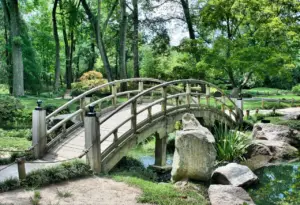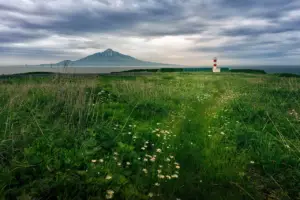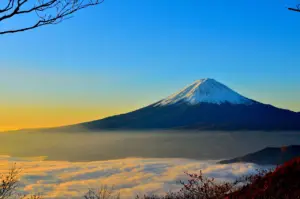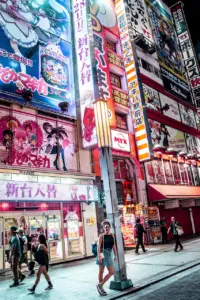Japan is a country that is rich in culture, history, and natural beauty. It is home to bustling cities, serene countryside, and picturesque landscapes that attract millions of tourists every year.
When it comes to travel destinations in Japan, Tokyo and Hokkaido are two of the most popular choices. While Tokyo is the heart of modern Japan and the country’s capital, Hokkaido is a serene natural wonderland with a distinct culture and lifestyle.
In this article, we will explore the contrasting lifestyles and cultures of Tokyo and Hokkaido. We will delve into the climate and weather, transportation and accessibility, accommodation and lodging options, food and cuisine, and must-see attractions and hidden gems in both regions.
By comparing and contrasting these two regions, we hope to provide readers with a comprehensive guide to help them plan their trip to Japan, whether they are looking for a metropolitan experience or a relaxing escape to nature.
Key Takeaways
- Hokkaido and Tokyo offer unique cultural experiences in Japan, with Hokkaido being influenced by the Ainu people and Tokyo being a modern metropolis with rich cultural heritage.
- Hokkaido has stunning natural landscapes and outdoor activities, while Tokyo has a vibrant cultural scene with museums, galleries, and theaters showcasing Japan’s heritage and contemporary art.
- Hokkaido has a distinct lifestyle and culture, while Tokyo is known for its innovative technologies, fashion-forward trends, and sophisticated urban lifestyle.
- Hokkaido’s climate is influenced by cold winds from Siberia and experiences heavy snowfall in the winter, while Tokyo has a humid subtropical climate and experiences heavy rainfall and typhoons in the summer.
Tokyo: The Heart of Modern Japan
The city of Tokyo stands as a symbol of Japan’s modernity and economic prowess, with its towering skyscrapers, bustling streets, and vibrant cultural scene. As the capital of Japan, Tokyo is known for its innovative technologies, fashion-forward trends, and sophisticated urban lifestyle.
It is a city that never sleeps, where the neon lights and the sound of traffic never cease. One of the most striking features of Tokyo is its impressive skyline, adorned with towering skyscrapers that are home to some of the world’s largest corporations. The city’s transportation system is also a marvel, with its extensive network of trains and subways that seamlessly connect its various districts.
In addition to its modern infrastructure, Tokyo is also home to a thriving cultural scene, with countless museums, galleries, and theaters showcasing Japan’s rich heritage and contemporary art. From its lively street markets to its sophisticated shopping malls, Tokyo offers visitors a unique blend of modernity and tradition that has made it one of the world’s most popular tourist destinations.
Hokkaido: The Serene Natural Wonderland
Hokkaido, a northern island of Japan, is a serene natural wonderland that offers stunning landscapes and outdoor activities for tourists and locals alike.
The island is known for its breathtaking scenery, such as the lavender fields of Furano and the crystal-clear waters of Shiretoko National Park.
Visitors can also experience the unique local lifestyle and culture of the Ainu people, an indigenous group that has inhabited Hokkaido for thousands of years.
Discover the Stunning Natural Landscapes
Exploring the diverse terrain of both Hokkaido and Tokyo unveils a fascinating contrast between the rugged, unspoiled wilderness of Japan’s northernmost island and the urbanized metropolis of the nation’s capital.
Hokkaido is renowned for its stunning natural landscapes that are home to a wide range of flora and fauna. The island’s vast wildlands are dotted with dense forests, towering peaks, and crystal-clear lakes, making it an ideal destination for nature lovers and outdoor enthusiasts.
Visitors to Hokkaido can explore the island’s many national parks, such as Shiretoko National Park, known for its rugged coastline and abundant wildlife, including brown bears, deer, and foxes. In the winter, Hokkaido transforms into a winter wonderland, attracting skiers and snowboarders from around the world to its world-class ski resorts. Moreover, the island’s hot springs, or onsen, provide a unique opportunity to relax and soak in the natural hot springs while enjoying the picturesque scenery.
Indeed, Hokkaido’s stunning natural landscapes are a must-see for anyone looking to experience the beauty and tranquility of Japan’s northernmost island.
Overall, Hokkaido’s natural landscapes offer a stark contrast to Tokyo’s urban environment. Tokyo may be the epitome of modernity, but it is also a city steeped in tradition, history, and culture. Visitors can explore the city’s many temples, shrines, and museums, or indulge in its world-renowned culinary scene. Tokyo’s vibrant energy and bustling streets provide a stark contrast to Hokkaido’s serene natural landscapes, making it an ideal destination for those seeking a unique cultural experience in Japan.
Experience the Local Lifestyle and Culture
Immersing oneself in the local lifestyle and culture of Japan provides a unique opportunity to gain insight into the traditions and values that have shaped this fascinating nation.
In Hokkaido, visitors can experience a slower pace of life and a strong connection to nature. The Ainu people, the indigenous inhabitants of Hokkaido, have a distinct culture and language that differs from the rest of Japan. Their traditional way of life, including fishing and hunting, is still practiced in some areas of Hokkaido.
Tokyo, on the other hand, is a bustling metropolis that embodies modern Japan. Visitors can explore the city’s rich history and culture through its many museums and galleries, and also experience the vibrant street culture and fashion scene. Tokyo is home to some of Japan’s most famous landmarks, including the Tokyo Tower and the Imperial Palace.
Whether in Hokkaido or Tokyo, experiencing the local lifestyle and culture is a must for anyone seeking to understand the unique blend of tradition and modernity that defines Japan.
Enjoy Outdoor Activities and Adventures
Experience the thrill of outdoor adventures in Japan, from hiking the famous Mount Fuji to skiing in the stunning snow-covered mountains of Niseko. Japan is a country with an abundance of natural beauty, and Hokkaido and Tokyo both offer unique opportunities for outdoor activities.
Here are three must-try outdoor adventures in these regions:
-
Skiing and snowboarding in Niseko: Hokkaido’s Niseko is known for its powder snow, making it a popular destination for skiing and snowboarding enthusiasts. With over 2,000 acres of skiable terrain, there are slopes suitable for all levels. The region also boasts a vibrant après-ski scene, with hot springs, restaurants, and bars.
-
Hiking in Mount Takao: Just an hour from Tokyo, Mount Takao is a popular destination for those seeking adventure and scenic views. The mountain has several hiking trails, ranging from easy to challenging, and can be enjoyed year-round. Along the way, hikers can encounter temples, shrines, and wild monkeys.
-
Cycling in Hokkaido: Hokkaido’s vast landscapes and low traffic make it a great destination for cycling enthusiasts. The Shiretoko Peninsula is a popular cycling route, offering stunning coastal views and the chance to encounter wildlife such as brown bears and sea eagles. There are also several cycling tours available, providing bike rentals, guides, and accommodation.
Whether it’s skiing, hiking, or cycling, Hokkaido and Tokyo offer a variety of outdoor adventures that are sure to satisfy any thrill-seeker. With their stunning natural landscapes and unique cultural experiences, these regions are a must-visit for anyone seeking adventure in Japan.
Contrasting Lifestyles and Cultures
This subtopic delves into the contrasting lifestyles and cultures of Japan, highlighting the unique traditions and customs that make each region distinct.
By comparing and contrasting the different ways of living, we can gain a deeper understanding of the history and evolution of Japanese society.
Through an objective and informative lens, we can explore the various facets of Japanese culture and appreciate the diversity that exists within the country.
Compare and Contrast the Different Ways of Living
A comparison of the ways of living in Hokkaido and Tokyo reveals stark differences in terms of population density, housing options, and cost of living.
Hokkaido is known for its vast open spaces, natural beauty, and low population density. The cost of living in Hokkaido is also relatively low compared to Tokyo. Housing options in Hokkaido vary from single-family homes to apartments, with plenty of space for outdoor activities and gardening. The slower pace of life in Hokkaido makes it an ideal destination for those seeking a relaxed and peaceful lifestyle.
On the other hand, Tokyo is a bustling metropolis with a population density of over 6,000 people per square kilometer. Tokyo’s high population density has resulted in a unique way of living, with many people opting for smaller living spaces such as apartments and shared housing. The cost of living in Tokyo is also significantly higher than in Hokkaido, with expensive housing, transportation, and food prices.
Despite this, Tokyo offers a vibrant and exciting lifestyle with a wealth of cultural and entertainment options. The fast-paced lifestyle and constant stimulation may appeal to those seeking a more dynamic and cosmopolitan lifestyle.
Explore the Unique Traditions and Customs
Exploring the unique traditions and customs of different regions in Japan can provide insight into the diverse cultural landscape of the country. When it comes to Hokkaido, the indigenous Ainu culture is an important part of the region’s identity. The Ainu people have their own language, music, and dance, and their traditions are still preserved in certain parts of the island. Visitors can learn about Ainu culture through museums, cultural centers, and festivals, such as the Porotokotan Ainu Museum in Shiraoi and the Upopoy National Ainu Museum and Park in Shiraoi.
On the other hand, Tokyo is a modern metropolis that is known for its cutting-edge technology and fashion. However, the city also has a rich history and cultural heritage. Visitors can learn about traditional Japanese arts such as ikebana (flower arrangement), tea ceremony, and calligraphy through classes and workshops. Tokyo is also home to numerous shrines and temples, such as the famous Meiji Shrine, which offers a glimpse into Japan’s religious traditions.
In addition, festivals such as the cherry blossom festival in spring and the Sanja Matsuri in May showcase Tokyo’s unique cultural traditions and customs.
Understand the History and Evolution of Japanese Society
Understanding the history and evolution of Japanese society is crucial for gaining a comprehensive understanding of the country’s culture and customs.
Japan has a rich and complex history that has shaped its society in unique ways. From the early Jomon period, Japan has had a distinct culture that has been influenced by various factors such as religion, geography, and political changes. The influence of Buddhism and Shintoism has been particularly significant in shaping the country’s beliefs and values.
Japan’s feudal era, which lasted from the 12th to the 19th century, had a significant impact on the country’s social structure. During this period, the samurai class played an important role in shaping Japanese society. The samurai were the warrior class who were responsible for protecting their lords and enforcing the law. Their values of loyalty, honor, and duty continue to influence Japanese society today.
The Meiji Restoration in the late 19th century marked a significant turning point in Japanese history as the country underwent rapid modernization and Westernization.
Understanding these historical events is essential for understanding the unique customs and traditions that are still prevalent in Japanese society today.
Climate and Weather
This subtopic delves into the climate and weather differences between Tokyo and Hokkaido.
Tokyo’s climate is characterized as humid subtropical, with hot and humid summers and mild winters.
Meanwhile, Hokkaido’s climate is subarctic, with long and harsh winters, short summers, and low humidity levels.
It is important to prepare for the different seasons when traveling to either city, as the weather conditions can greatly affect one’s comfort and itinerary.
Tokyo’s Humid Subtropical Climate
Tokyo’s humid subtropical climate is characterized by hot and humid summers, mild winters, and frequent rainfall throughout the year. This climate is influenced by the Kuroshio Current, which brings warm water from the tropics to the coast of Japan, and the Siberian High, which brings cold and dry air from the north.
The summer months of June to September are the hottest and most humid, with average temperatures of 26-30°C and high humidity levels. In contrast, the winter months of December to March are mild, with average temperatures of 5-10°C, and occasional snowfall.
To fully appreciate Tokyo’s humid subtropical climate, here are some interesting facts to take note of:
-
Tokyo’s rainy season, known as tsuyu, usually lasts from mid-June to mid-July, bringing heavy rainfall and high humidity levels.
-
The city experiences typhoons, or tropical cyclones, from late summer to early autumn, with the peak season from August to September.
-
The urban heat island effect, caused by the abundance of buildings and concrete in the city, can make temperatures in Tokyo several degrees higher than in surrounding rural areas.
-
Cherry blossom season, a popular time for tourists, usually occurs in late March to early April, with the peak bloom lasting for a few days.
-
Tokyo experiences a phenomenon called yukiguni, or ‘snow country,’where snow falls in the city but not in the surrounding areas due to the urban heat island effect and warmer temperatures near the coast.
Hokkaido’s Subarctic Climate
While Tokyo’s humid subtropical climate is characterized by hot and humid summers and mild winters, Hokkaido, Japan’s northernmost island, experiences a subarctic climate. This means that Hokkaido’s winters are long, cold, and snowy, while its summers are relatively short and cool.
Hokkaido’s subarctic climate is influenced by the cold winds that blow from Siberia, causing temperatures to drop significantly. The island receives heavy snowfall during the winter months, which is a major attraction for tourists who come to experience winter sports such as skiing and snowboarding.
In contrast to Tokyo’s urban landscape, Hokkaido’s natural beauty, including its snow-covered mountains and frozen lakes, makes it a popular destination for tourists who want to experience Japan’s winter wonderland. Despite its harsh winters, Hokkaido’s summers bring a different kind of charm, as the landscape transforms into a lush green oasis, with beautiful wildflowers and hillsides covered in greenery.
How to Prepare for the Different Seasons
One practical approach to traveling to Japan is to prepare for the different seasonal climates and weather conditions. While Hokkaido experiences a subarctic climate with cold winters and mild summers, Tokyo has a humid subtropical climate with hot and humid summers and cool winters. As such, it is important to pack appropriate clothing for each season and plan activities accordingly.
For those visiting Hokkaido during the winter months, it is essential to bring warm, waterproof clothing and footwear. Snow boots and heavy jackets are a must, as temperatures can drop well below freezing and snowfall can be heavy.
In contrast, Tokyo’s summer months require lighter clothing such as t-shirts and shorts, but it is also important to bring a hat and sunscreen to protect against the intense sun. Visitors should also be aware of Japan’s typhoon season, which occurs from June to October and can bring heavy rainfall and strong winds.
Overall, being prepared for the different climates and weather conditions in Hokkaido and Tokyo will ensure a comfortable and enjoyable trip.
Transportation and Accessibility
The transportation infrastructure in Hokkaido offers a range of options for travelers to explore the expansive region. The prefecture is connected by a well-developed network of highways, including the Hokkaido Expressway, which links all major cities and towns.
Additionally, there are numerous train lines that connect Hokkaido to the rest of Japan, including the Hokkaido Shinkansen, which opened in 2016 and reduced the travel time between Tokyo and Hokkaido to just over four hours.
The region also has an extensive bus network, which provides convenient access to remote areas and popular tourist destinations.
In contrast, Tokyo’s transportation network is known for its efficiency and reliability. The city has an extensive subway system, with 13 lines that cover most of the city’s central districts, as well as numerous train lines that connect Tokyo to other parts of Japan.
Additionally, there are several bus and taxi services that provide convenient transportation options for travelers.
Tokyo’s transportation infrastructure is also characterized by its cleanliness and safety, which are important factors for many travelers.
While both Hokkaido and Tokyo offer convenient transportation options, the two regions differ in terms of their size and scope, with Hokkaido’s transportation network catering to a much larger and more diverse area.
Accommodation and Lodging Options
With accessibility and transportation already established, it is now time to discuss the different accommodation and lodging options between Hokkaido and Tokyo. Both cities offer a wide range of choices, from budget-friendly hostels to luxurious hotels. However, the type of accommodation and the pricing varies greatly between the two cities.
In Hokkaido, visitors can find traditional Japanese inns called ryokans, which offer a unique cultural experience. These ryokans often feature tatami rooms, communal hot springs, and traditional Japanese meals. In contrast, Tokyo offers a more modern experience with high-rise hotels and western-style accommodations. The pricing also differs, with Hokkaido’s ryokans being more expensive but more authentic, while Tokyo’s hotels offer a range of prices and amenities.
Here are three things to consider when choosing accommodation in either city:
-
Hokkaido’s ryokans provide a traditional Japanese experience, but they come with a higher price tag. Consider your budget when deciding if the cultural experience is worth the extra cost.
-
Tokyo’s hotels are more varied in price and amenities, so research carefully to find the best value for your needs.
-
Both cities offer a range of accommodation options, so consider what type of experience you want and what is most important to you when making your decision.
Food and Cuisine
Exploring the diverse culinary scene in these two cities allows visitors to savor the unique flavors and aromas of Japanese cuisine.
Tokyo is known for its bustling food scene, featuring an endless array of restaurants, food markets, and street food vendors. From world-renowned sushi and ramen to local specialties like monjayaki and okonomiyaki, Tokyo offers a wide range of dishes to satisfy any foodie’s palate. Visitors can also indulge in high-end dining experiences at Michelin-starred restaurants or sample the latest food trends at trendy cafes and eateries.
On the other hand, Hokkaido’s cuisine is heavily influenced by its natural surroundings, with the region being known for its fresh seafood, dairy products, and seasonal vegetables. Visitors can try local specialties such as sushi made with Hokkaido’s famous seafood, creamy dairy desserts like milk ice cream, and hearty dishes like soup curry and jingisukan (grilled lamb). Hokkaido is also famous for its beer and whisky, with visitors being able to take tours of breweries and distilleries to sample the local brews.
Overall, both cities offer unique culinary experiences, with Tokyo’s food scene being global and diverse, while Hokkaido’s cuisine is heavily influenced by the region’s natural resources.
Must-See Attractions and Hidden Gems
The next Subtopic we will explore delves into the must-see attractions and hidden gems of Tokyo and Hokkaido. Tokyo’s iconic landmarks and hidden gems will be discussed, as well as Hokkaido’s natural wonders and cultural treasures.
Additionally, we will provide tips on how to plan your itinerary and make the most out of your trip to Japan. This discussion aims to provide an informative and engaging guide for those looking to explore the diverse offerings of these two regions.
Tokyo’s Iconic Landmarks and Hidden Gems
Tokyo boasts numerous iconic landmarks that are easily recognizable from afar, such as the towering Tokyo Skytree and the historic Tokyo Tower. The Tokyo Skytree, standing at a height of 634 meters, is the tallest tower in the world and provides visitors with a breathtaking view of the city. The tower also houses a variety of shops, restaurants, and an observation deck that offers a panoramic view of Tokyo. Another iconic landmark is the Tokyo Tower, which was built in the 1950s as a symbol of the city’s post-war revival. The tower, standing at a height of 333 meters, offers visitors a spectacular view of Tokyo and the surrounding areas.
In addition to these iconic landmarks, Tokyo also has many hidden gems that are worth exploring. For instance, the Kiyosumi Teien Garden is a beautiful oasis in the heart of Tokyo that offers visitors a serene escape from the hustle and bustle of the city. The garden features traditional Japanese landscaping, including a pond, waterfalls, and a tea house. Another hidden gem is the Yanaka Cemetery, which is one of the oldest and largest cemeteries in Tokyo. The cemetery is home to many historic graves and is a peaceful place to take a walk and reflect on the city’s rich history. Overall, Tokyo’s iconic landmarks and hidden gems offer visitors a unique and unforgettable experience of Japan’s capital city.
| Landmark | Description | Fun Fact | ||
|---|---|---|---|---|
| Tokyo Skytree | Tallest tower in the world | Has a Pokemon Center on its lower floors | ||
| Tokyo Tower | Built as a symbol of post-war revival | Changes colors to reflect the season or occasion | ||
| Kiyosumi Teien Garden | Traditional Japanese landscaping | Has a large stone lantern that is over 300 years old | ||
| Yanaka Cemetery | One of the oldest and largest cemeteries in Tokyo | Contains the graves of several famous figures in Japanese history | ||
| Rainbow Bridge | Connects Tokyo to Odaiba | Lights up at night to resemble a rainbow | Offers stunning views of Tokyo Bay and the city skyline |
Hokkaido’s Natural Wonders and Cultural Treasures
Hokkaido’s unique blend of natural wonders and cultural treasures offers visitors a distinct and captivating experience of Japan’s northern region. The island is renowned for its stunning landscapes, including the snow-capped peaks of the Daisetsuzan Mountains, the crystal-clear waters of Lake Mashu, and the rolling hills of Furano.
Visitors can also explore the island’s rich cultural heritage, which is shaped by its Ainu population, Japan’s indigenous people. The Hokkaido Museum of Northern Peoples, located in Sapporo, showcases the history and culture of the Ainu people through exhibits and demonstrations. Meanwhile, visitors can also experience traditional Ainu cuisine and crafts in towns such as Shiraoi and Nibutani.
In addition to its natural and cultural attractions, Hokkaido is also known for its winter sports. The island plays host to several world-class ski resorts, including Niseko, which is famous for its powder snow and stunning scenery. Visitors can also enjoy outdoor hot springs, known as onsen, which are scattered throughout the island. The Noboribetsu Onsen, located in the town of Noboribetsu, is one of the most famous in Japan, offering visitors a unique and relaxing experience.
Hokkaido’s distinct blend of natural wonders, cultural treasures, and winter sports make it a must-visit destination for any traveler seeking to explore Japan’s northern region.
How to Plan Your Itinerary and Make the Most of Your Trip
When planning an itinerary for a trip to Japan’s northern region, it is important to consider the various natural, cultural, and winter sports attractions that Hokkaido has to offer. One must take into account the time of the year as well, as Hokkaido experiences different seasons and weather patterns compared to the rest of Japan.
For example, winter sports enthusiasts would flock to Hokkaido during the winter months to experience skiing and snowboarding in world-renowned resorts such as Niseko and Furano. On the other hand, summer visitors can enjoy hiking at Daisetsuzan National Park or exploring the scenic Shiretoko Peninsula.
In addition to outdoor activities, Hokkaido also has a rich cultural heritage that is worth exploring. Visitors can experience the Ainu culture and traditions at the Ainu Museum in Shiraoi or visit the historic port city of Otaru to see the beautifully preserved Meiji-era buildings. Food lovers would also be delighted with Hokkaido’s cuisine, such as their famous seafood, ramen, and dairy products.
With so much to see and do in Hokkaido, careful planning of one’s itinerary is crucial to make the most out of one’s trip to Japan’s northern region.
Frequently Asked Questions
What is the cost of living in Hokkaido compared to Tokyo?
The cost of living in Hokkaido is generally lower compared to Tokyo. This is because Tokyo is the capital and the center of Japan’s economy, making it a more expensive place to live.
Housing, transportation, and food are all more expensive in Tokyo compared to Hokkaido. However, it is important to note that the cost of living can vary depending on one’s lifestyle and preferences.
While Hokkaido may be cheaper in some aspects, it may also have a higher cost of living in other areas. Ultimately, the decision of where to live should be based on personal factors such as career opportunities, lifestyle, and personal preferences rather than just the cost of living.
Are there any endangered animal species unique to Hokkaido?
Yes, there are endangered animal species unique to Hokkaido.
One such species is the Hokkaido wolf, which was officially declared extinct in 1986 due to hunting and habitat loss.
Another endangered species is the Ezo brown bear, which is native to Hokkaido and is threatened by habitat destruction and human disturbance.
The Blakiston’s fish owl, a large owl species found only in Hokkaido, is also considered endangered due to habitat loss and disturbance from human activities.
In addition, the Hokkaido sika deer is listed as a vulnerable species, with population declines due to hunting and habitat destruction.
These unique and endangered species highlight the importance of conservation efforts in Hokkaido to protect its biodiversity and natural resources.
What are the best places to go skiing in Tokyo and Hokkaido?
When it comes to skiing, both Tokyo and Hokkaido have plenty of options to offer. In Tokyo, the most popular ski resort is the Gala Yuzawa Ski Resort, which is easily accessible via the Shinkansen bullet train.
Other great options include the Naeba Ski Resort and the Hakuba Ski Resort, both of which offer a variety of runs and stunning mountain views.
On the other hand, Hokkaido is famous for its powder snow and has some of the best ski resorts in the world. The Niseko Ski Resort is the largest and most popular, offering a huge variety of runs for all skill levels.
Other notable options include the Rusutsu Ski Resort and the Furano Ski Resort.
Overall, both Tokyo and Hokkaido offer fantastic skiing experiences, and it ultimately comes down to personal preference and location convenience.
How do the local people in Hokkaido and Tokyo differ in terms of traditions and customs?
In terms of traditions and customs, there are notable differences between the local people of Hokkaido and Tokyo.
Hokkaido, being Japan’s northernmost island and historically a frontier region, is known for its unique indigenous culture and strong ties to nature. The Ainu people, the indigenous inhabitants of Hokkaido, have their own language, customs, and way of life. Traditional Ainu practices such as fishing and hunting, as well as their distinctive clothing and housing styles, still exist in some parts of Hokkaido. Moreover, Hokkaido is renowned for its agricultural products and cuisine, such as dairy products, seafood, and potatoes.
In contrast, Tokyo, as Japan’s capital city, is a bustling metropolis that is heavily influenced by modernization and globalization. Tokyo’s culture is defined by its fast-paced lifestyle, cutting-edge technology, and diverse population. Tokyoites are known for their politeness and punctuality, and there are many customs and etiquette rules that are specific to the city. For example, it is customary to bow when greeting someone, and eating while walking or talking on the phone in public is considered impolite.
Overall, the differences in traditions and customs between Hokkaido and Tokyo reflect their distinct histories and environments.
What are the most popular festivals and events in Tokyo and Hokkaido?
In terms of festivals and events, Tokyo and Hokkaido offer diverse experiences.
Tokyo hosts numerous events throughout the year, including the cherry blossom festival in spring, the Sumida River Fireworks Festival in summer, and the Tokyo International Film Festival in fall.
Hokkaido, on the other hand, is known for its winter festivals, such as the Sapporo Snow Festival and the Asahikawa Winter Festival, which feature intricate ice sculptures and other winter activities. Additionally, Hokkaido hosts the Furano Lavender Festival in summer, showcasing picturesque fields of lavender.
Overall, both regions offer unique and exciting festivals and events throughout the year for visitors to enjoy.
Conclusion
In conclusion, Japan offers two distinct destinations with their contrasting lifestyles and cultures – Tokyo and Hokkaido.
Tokyo, as the heart of modern Japan, is known for its bustling city life, shopping districts, and advanced technology. On the other hand, Hokkaido is a serene natural wonderland that offers a more laid-back lifestyle with its vast open spaces, scenic beauty, and outdoor activities.
The climate and weather in both regions also present a considerable difference, with Tokyo experiencing humid subtropical weather and Hokkaido experiencing a subarctic climate. Despite the differences, both places offer accessible transportation options and a variety of accommodation and lodging options.
Lastly, Japan boasts a unique food and cuisine culture that visitors can explore in both destinations. Whether it’s sushi and ramen in Tokyo or seafood and dairy products in Hokkaido, the country’s culinary delights are sure to satisfy any craving.
Ultimately, a visit to both Tokyo and Hokkaido offers a well-rounded Japanese experience that showcases the country’s diverse offerings.



















































































